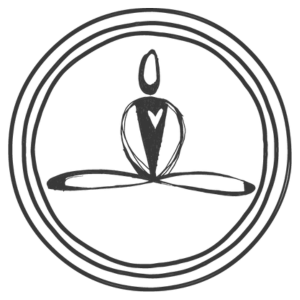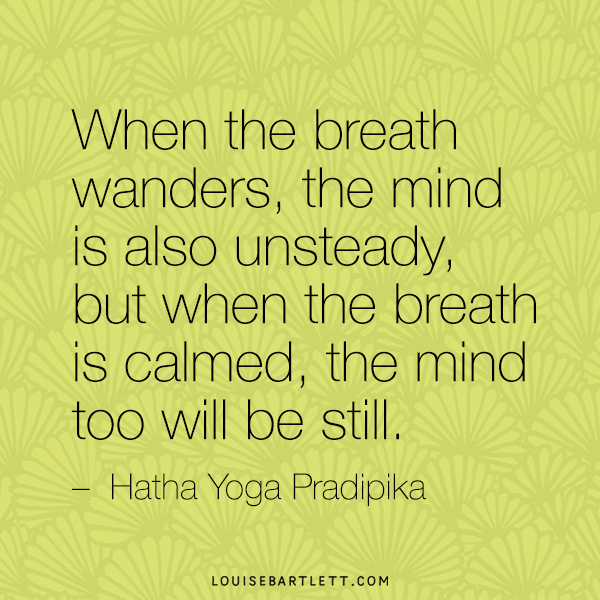Pranayama: A Beginner’s Guide to Yoga Breathing Exercises
Breathing is something we all know how to do. And yet, the majority of adults (and teenagers) forget about their natural ability to breathe fully. When we are young, we’re taught to control our feelings and emotions, and as a result our muscles tighten and our breathing patterns become restricted. This has a huge impact on our mental and physical wellbeing!
Pranayama - the Life Force
Pranayama is the breath. The word itself is made up of two words: prana, which refers to the breath and means “life force,” and yama, which means “control.” The combination of the two words means breathing exercises. When we learn to breath more deeply, we become more aware and conscious of our breath. And, conscious breath is one of the most powerful transformative tools available to us.
Making breathing practices a part of our daily life will initiate deep, profound and meaningful transformation. When we are not breathing fully, we are not living fully!
Some benefits to conscious breathing:
Stronger lungs with vastly increased capacity
A healthier heart and stronger diaphragm
In many cases, the ability to heal asthma and also release the habit of smoking
The nervous system is calmed, diminishing stress, lowering one’s blood pressure and heart rate, and thereby improving sleep and maintaining a more-enhanced mental state while awake
Enables us to identify and heal emotional wounds from our past
Cultivates better relationships with others (1)
5 Yoga Breathing Techniques To Try Today
OCEAN BREATH
Ocean Breathing, also known in Sanskrit as Ujjayi breathing (pronounced oo-jai), has a balancing influence on the entire cardiorespiratory system and the nervous system. Ocean breathing is accessible to anyone - it doesn’t matter what your age, your size, or physical constraints are, if you can breath, you can do this exercise.HAND BREATH
Begin this practice by sitting up tall and becoming aware of your IN breath and your OUT breath. Slowly, bring them into balance and slow them down. Next, hold up your hand in front of you and place your finger at the base of your thumb. Start to inhale as slowly as possible for a count of a 4 as you work you finger up the side of your thumb. Then as your finger slowly slides down the other side of your thumb, slowly exhale for the same count of 4. Continue going up and down each finger, while you slowly inhale and exhale. When you have reacher the pinky finger, then go backwards. Try this for 5 minutes every day for a week and see how you feel!5-4-3-2-1 MEDITATION
Begin this practice by sitting up tall and becoming aware of your IN breath and your OUT breath with your eyes open.
Then begin the practice.
5 - notice 5 things that you can SEE around you. Then close your eyes.
4 - notice 4 things you can HEAR
3 - notice 3 things you can TOUCH
2 - notice 2 things you can SMELL
1 - notice 1 thing you can TASTE
Open your eyes, take a few more breaths and notice how you feel.BEE BREATH
Bee breath, or Bhramari pranayama is effective in instantly calming the mind, releasing anxiety and anger. A simple technique, it can be practiced anywhere to relieve stress. This breathing technique derives its name from the black Indian bee called Bhramari. The exhalation in this pranayama exercise resembles the humming sound of a bee.
1. Begin this practice by sitting up tall and becoming aware of your IN breath and your OUT breath. Close or soften the eyes and smile softly.
2. Place your index fingers in your ears. There is a cartilage between your cheek and ear. Place your index fingers on the cartilage.
3. Take a deep breath IN and as you breathe OUT, gently press the cartilage. You can keep the cartilage pressed or press it in and out with your fingers, while making a loud humming sound like a bee.
4. Breathe in again and continue the same pattern for 6-7 times. When you are done with the pattern, keep the eyes closed and observe the sensations you feel and the quietness within. Repeat this 3-4 times a day.BELLOWS BREATH
If you have low energy levels, then try three rounds of Bellows breath or Bhastrika pranayama to quickly and powerfully increase your energy and calm the mind.
1. Begin by kneeling with your hands palms down on the thighs.
2. As you inhale, raise your arms over your head for a count of four.
3. Exhale through the mouth for a count of four, as you lower your arms back down.
4. Repeat this 6-7 times. When you are done with the pattern, keep the eyes closed and observe the sensations you feel.
Creating daily habits
Making breathing practices a part of your positive DAILY habits will create meaningful transformation for you. Practice it and you will see for yourself! It’s a good idea to keep a journal of how you feel each day, so you can look back and notice your improvements over time. Then share your success with me in the comments below!



